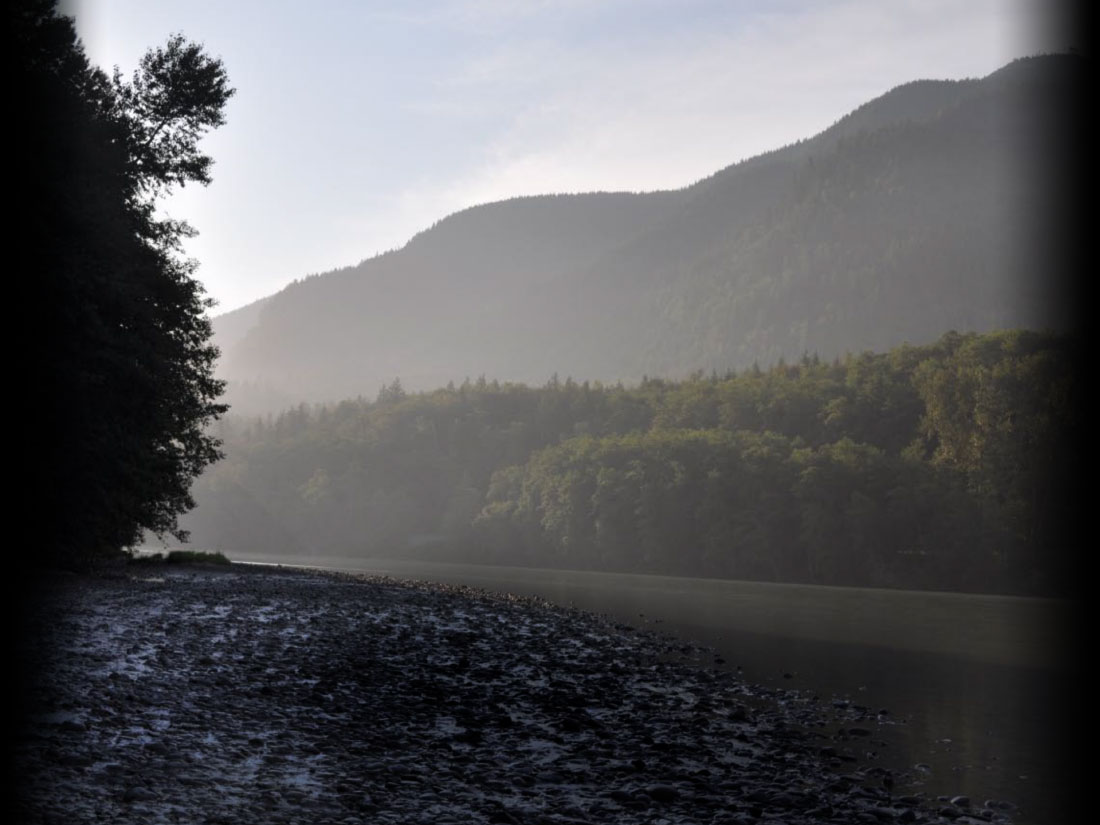Posted on May 1, 2025 by Skagit Watershed Council
We are excited to announce that we are hosting a contest for short stories/essays about your experiences salmon fishing in or around the Skagit River watershed. The winner will receive a $100 cash prize and have their work published in our annual newsletter
For full rules and to enter, please click here
If you have questions or would like to volunteer as a judge for this contest, please contact Holli at hwatne@skagitwatershed.org
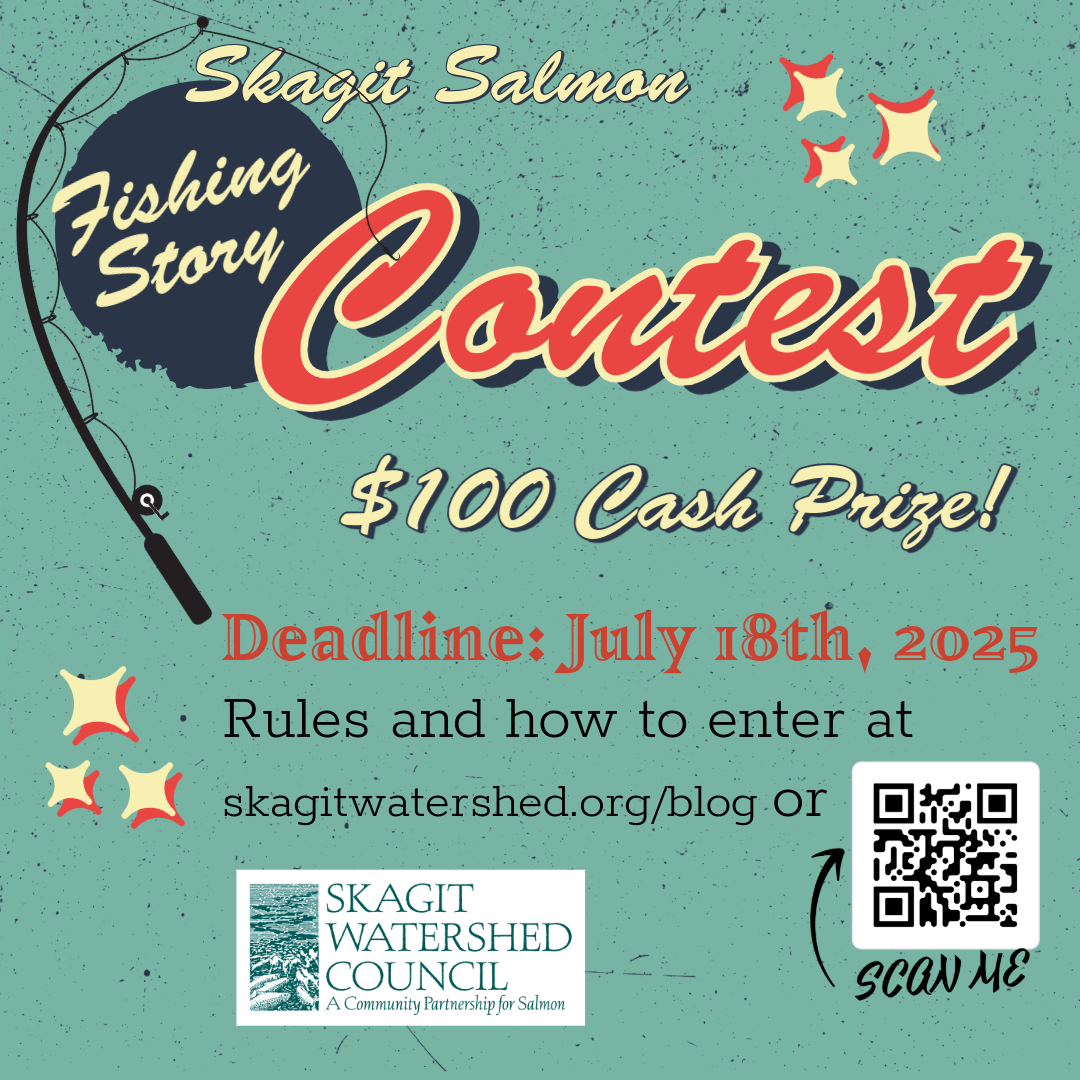
Posted on April 23, 2024 by Skagit Watershed Council
Another grant round is underway at the Skagit Watershed Council to help save the Skagit’s wild salmon! This will be the 25th year that the Watershed Council has administered the WA state program to prioritize voluntary salmon habitat restoration projects in Skagit Valley, and it is the biggest year ever!! Nineteen projects were submitted this year by a range of county, tribal and state governments and non-profit organizations for a total of $47.8 million. Sixteen of these projects, totaling $7.2 million, will be considered for Salmon Recovery Funding Board funds. The other three very large projects, totaling $40.6 million, will compete for Puget Sound-wide or state-wide funds allocated by the state legislature. These projects mean hope for recovering salmon, jobs for Skagitonians, and conservation of our beautiful Skagit landscape.
The Salmon Funding Grant Round – How Does It Work?
Washington State provides funds annually (sometimes with federal support) to help protect and recover wild salmon populations throughout the state. As part of that state-mandated process, the Watershed Council organizes committees that have the responsibility to evaluate and prioritize voluntary salmon recovery projects.
-
- The members of the Technical Review Committee (TRC) are local scientists and practitioners with broad, in-depth technical knowledge of salmon, their habitat and how to do restoration in our watershed. They provide a technical evaluation of proposed projects.
- The Lead Entity Citizens Committee (LECC) provides a citizen-based evaluation and prioritization of the proposed salmon projects that then is used by the state Salmon Recovery Funding Board to select the projects to fund. The members of the Lead Entity Citizens Committee are from the three Skagit treaty tribes, two state agencies, county government, the Conservation District, local salmon restoration and protection practitioners, farmers, citizens, and regional conservation organizations.
- These committees make up what is called the Lead Entity.
- The Skagit Watershed Council, a private nonprofit since 1998, was designated by all the governments in Skagit County, plus Whatcom and Snohomish counties, to house the Skagit Lead Entity Program. Lead Entity programs were established across the state by Governor Gary Locke as part of his “Extinction is Not an Option” Salmon Recovery Law to prioritize voluntary salmon recovery projects at the local level. This is referred to as “the Washington way” where citizens have a seat at the table with governments in making decisions about priorities for voluntary habitat restoration.
As part of the project evaluation process, site visits to proposed project locations take place in early May. Technical project review by the TRC happens in July and final decisions about project prioritization by the LECC happens in August. Stay tuned for more details about each of the projects as project sponsors finish up their proposals by the end of June.
Watershed Council Board Elections
On March 27th we held our first quarterly Council of Members meeting of 2024. The “Council” of the Watershed Council is made up of 46 member organizations all committed to our mission of facilitating voluntary salmon recovery projects based on the best-available science.
As a 501(c)(3) non-profit organization, the Watershed Council is governed by a Board of Directors. At the quarterly meeting we held Board elections. The Board traditionally has had representatives from of all three treaty tribes, state agencies, county government, conservation non-profits, and representatives from other Watershed Council member organizations. A key element to success is having Board seats available for the salmon co-managers in the Skagit, the Sauk-Suiattle, Upper Skagit, and Swinomish Indian Tribes and Washington Department of Fish and Wildlife. With the recent elections, nine of the eleven available Board seats are filled. There is always the opportunity for past board members to rejoin the organization’s leadership or for different member organizations to join the Board for the first time. The Council of Members and the Board are our “Community Partnership for Salmon”.
The Council reelected Skagit County Commissioner Peter Browning for a second term and elected Kara Rowe to her first term. We are pleased Commissioner Browning was willing to continue on the Board. We are excited to welcome Kara, the Policy Director of Western Washington Agricultural Association, as our newly elected member. WWAA was a founding member of the Skagit Watershed Council and has participated in the Lead Entity process for years. We are thrilled to now have Kara on our Board and bringing the perspective of a coalition of diverse, commercial farming operations in northwest Washington. Agriculture is part of the integral fabric of the economy in the Skagit watershed and helps make the Skagit a great place to live.
We are grateful to these exceptional people on the Board who choose to invest their time and talent toward serving the Skagit Watershed Council’s mission. We have a strong team advocating for Skagit salmon!
Community Engagement in the Skagit
The Watershed Council’s Community Engagement Program is also busy this time of year teaching kids in schools about salmon and water quality and organizing outreach and education events for the community, including a presentation to Salish Sea Stewards. In support of Skagit teachers, we have an update to the STEAM guide for K-12 teachers coming out in mid-June and a TeachSkagit.org website, which will serve as a more interactive way to communicate with teachers about conservation education resources available in the Skagit Watershed. Check out our community calendar for educational and volunteer events. You can also see some of our community education videos on our website as well as recordings of our annual riparian conference.
Next Meeting
Our next quarterly meeting will be June 6th at 1:00 at Skagit Publishing. We will hear about some hot-off-the-press science about the positive impacts of estuary restoration on salmon—a success story!
Posted on January 8, 2024 by Skagit Watershed Council
The 10th Annual Illuminight Winter Walk will be happening on Friday, January 26th, in downtown Mount Vernon. 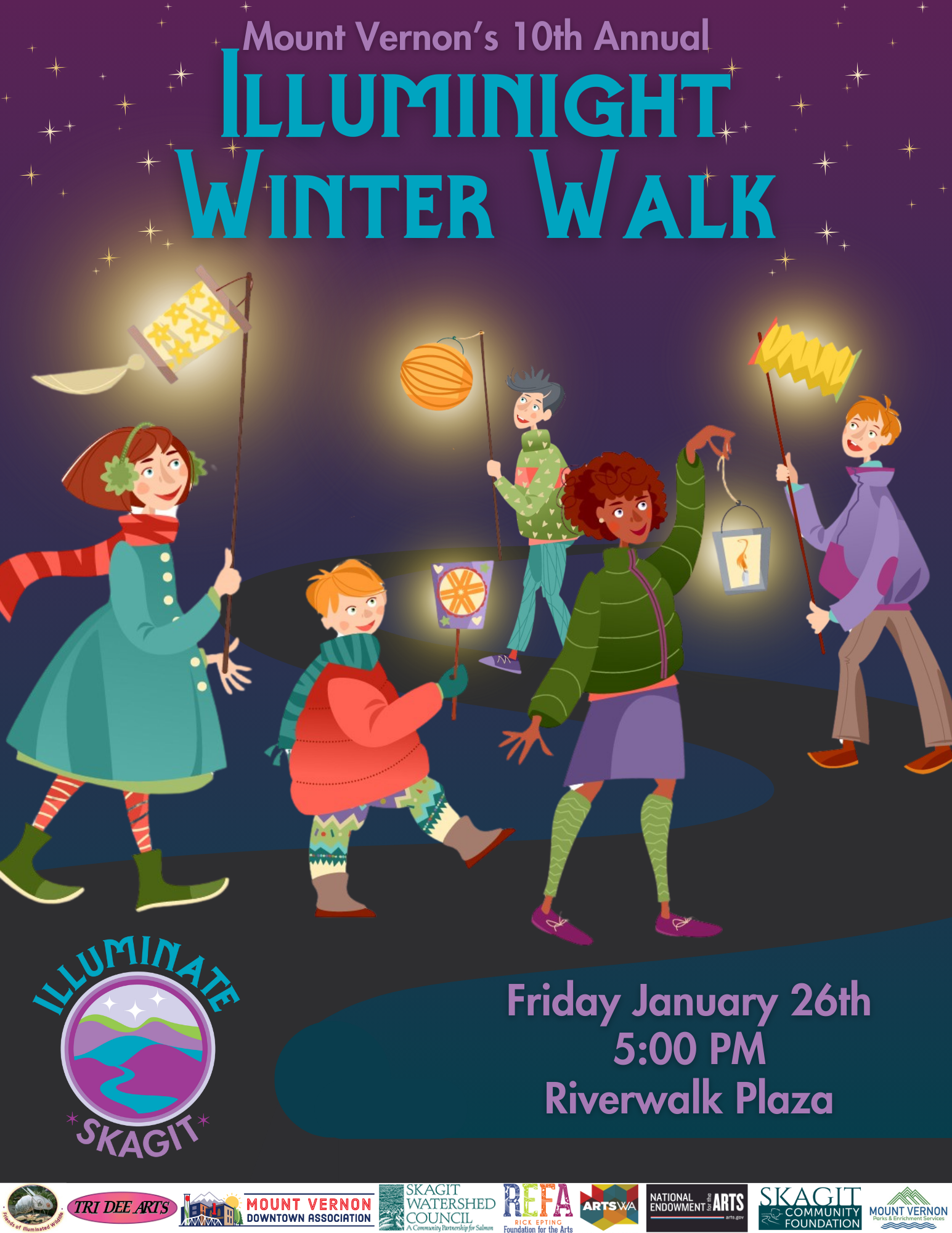
This event is a luminary-lit procession in celebration of our river, our ecosystem, and the many communities of people and other being that live here.
Make a free luminary-in-the-moment at Tri-Dee Arts during business hours on the day of the event.
Get free globe luminary kits (while supplies last) from MoNA or the Mount Vernon Parks.
The event officially starts with the La Venture Marimba Ensemble at 5pm at the Riverwalk Plaza.
Free luminaries and new lights for old luminaries will be available at the Information Booth (while supplies last)
Continue reading →
Posted on July 8, 2021 by Skagit Watershed Council
Our Skagit River is a watershed of great beauty and importance. There are many ways that we can celebrate and protect this special place. Learn more in our new story map! Click below for the version you want.
Nuestro río Skagit es una cuenca hidrográfica de gran belleza e importancia. Hay muchas formas en que podemos celebrar y proteger este lugar especial. ¡Aprenda más en nuestro nuevo story map! Haga clic a continuación para ver la versión que desee.
Posted on October 6, 2020 by Skagit Watershed Council
Thank you to everyone who joined us for the Virtual Illuminight 2021, on Friday, Jan 29th!
View the Recording HERE
Continue reading →
Posted on April 9, 2020 by Skagit Watershed Council
We at the Skagit Watershed Council know this community is doing what it takes to keep the impacts of the COVID-19 to a minimum in the Skagit Valley. We are all making personal sacrifices so that our loved ones and neighbors can get through this difficult time. Many individuals and organizations are working hard right now to make sure that environmental awareness and education are not among the things being sacrificed. On this page, we will be sharing our work and links to other online resources that may help our community.
Continue reading →
Posted on April 8, 2020 by Skagit Watershed Council
By Richard Brocksmith, Executive Director, Skagit Watershed Council, for the 2019 Skagit River Salmon Festival Program
Many people in the Pacific Northwest have either grown up with, or have come to love, our Orca whales. They live alongside us in Puget Sound; they have strong, mother-led family groups who teach their young how to survive in the wide world; and their intellectual capacity and curiosity, maybe even feelings, have captured our imagination.
Most folks know our local Orca whales are in very serious trouble and might not survive much longer without significant changes from our human society. A few background facts that are important:
- Orca whale family groups or “pods” live in every ocean in the world, but three pods (named J, K, and L) have evolved to become their own species in Puget Sound. They are known as “Southern Residents.”
- These Southern Residents eat only salmon, unlike the “transient” pods that eat marine mammals such as seals and sea lions.
- The salmon-eating Southern Residents have seen a population decline over the last 25 years, dropping from a high of 98 whales to a low of 76 whales. This decline caused the federal government to list them as endangered with extinction under the Endangered Species Act.
- The recent decline is blamed first and foremost on the dramatic decrease in their preferred prey, Chinook salmon, but also due to increases in water-borne contaminants and boat noise. Southern Residents prefer Chinook salmon at least 80% of the time (with chum and other salmon making up the balance) because of that salmon’s larger size, fat content, return timing, and the fact that some of them choose to reside in Puget Sound instead of going out to the Northern Pacific Ocean.
- Interestingly, the transient whales, who as their name implies range further around the West Coast than the Southern Residents (including into Puget Sound), have been increasing during this same time period. That’s likely because unlike salmon, their favorite prey item of seals and sea lions have increased.
Southern Resident Orcas range from the Queen Charlotte Islands in Canada down to the California Coast, but historically spent much of their summers in Puget Sound. They historically had access to rich salmon fishing grounds that included the Fraser River, Puget Sound, the Columbia River, and the Sacramento River, all of which produced huge runs of Chinook salmon. This “biocomplexity” of having different rivers to fish allowed them to adjust their feeding locations as different rivers had higher or lower success in producing Chinook salmon from year to year.
Southern Resident Orcas historically chose Puget Sound in the spring and summer as they had ample access to Chinook salmon returning to the Fraser River in Canada as well as Puget Sound Rivers. Also, these Chinook demonstrate different run timing, so that some come back in spring, some in summer, and some in fall, providing that biocomplexity and thus reducing risk if one Chinook population should crash in any year.
Here’s where the Skagit River comes into play. Of all the Puget Sound Rivers, Skagit produces more than half of all wild Chinook, both historically and today, which is roughly an order of magnitude more than any other river. Anywhere from 5,000 to 25,000 Chinook salmon return to the Skagit River every year! The Skagit is also the largest contributor of spring Chinook salmon in Puget Sound by far, with several thousand of them returning annually.
It’s easy to see why the Skagit is the most important Chinook producer in Puget Sound for Southern Resident Orca recovery! This is a fact that we as Skagitonians, or those that come to play in Skagit, can be very proud of, but also hopefully will embrace as strong environmental advocates for preserving and restoring this special place!
Time is of utmost importance as our Orcas face a very real threat of extinction. Read ahead in other articles in this pamphlet to learn what specific things you can do to help salmon and Orcas today!
Posted on April 8, 2020 by Skagit Watershed Council
By Richard Brocksmith, Executive Director, Skagit Watershed Council, for the 2018 Skagit River Salmon Festival Program
Thank you for joining us again this year at the Skagit River Salmon Festival to have some fun and learn how to ensure the preservation of the Skagit River and its salmon resources. We won’t achieve this goal without your help!
There are as many reasons to preserve this amazing area as there are perspectives heard in the watershed. That’s because we each have a different history and context for living, working, and playing here that has shaped our sense of this place and our community.
For instance, family and tradition are words one hears often when talking with local, native American tribal members about the importance of this place. Marilyn Scott, Vice Tribal Chair for the Upper Skagit Indian Tribe, says “It’s just so special when you hear some of the stories that are passed down from generation to generation. You can bring your family out to a creek and go fishing and have that experience that is shared as part of your story.” To not have access to those resources could be devastating to a family’s quality of life and relationship to the land.
Another important part of our community is the agriculture sector, with the early pioneers settling here five generations ago. Mike Youngquist is a perfect example with his great grandfather homesteading 40 acres in 1886 just west of Mount Vernon. He believes the area is extremely unique in that it nurtures deep roots, cooperation, and optimism in the community that provides the ability for farmers to handle the struggles that inevitably pop up. And the place’s natural beauty and productivity are integrally tied to the Skagit River. “It’s the lifeblood of this valley,” he said.
As much as anything, the Skagit Valley is also defined by forests and forestry, with most of the upper watershed covered in trees. Mark Hitchcock, a local, lifelong forester, grew up and spent his career in the deep woods of Washington. He sees the Skagit as “special because of the juxtaposition of all of its natural resources from forest to saltwater and the islands,” including “the interface with our use of the land.” He says he “loves seeing the swans and the snow geese” in the fields and it “makes me realize that we [humans] are still part of the natural environment and we do live in a very glorious place.”
Saul Weisberg, Executive Director of the North Cascades Institute, has been bringing youth and adults in the community together to share experiences in the Skagit since 1986. “We may not always be in agreement, but we share experiences because we live here together, and that is really powerful,” he says. One gets the sense from Saul that our different experiences are like the thousands of headwater streams of the Skagit, all flowing down in a lifelong journey to join together to form our creeks and then finally the mighty Skagit itself. And that this epic, life-giving, metaphoric waterbody both supports our community, and depends on our community, for our common good.
So, what do these folks all have in common? They’ve each expressed in their own way that to preserve what we love about the Skagit River we sometimes have to challenge ourselves and the perspectives we find ourselves in to come together as a community and work together. Scott Schuyler, the Natural Resources Policy Representative of the Upper Skagit Indian Tribe says “We have so many resources in this valley, but if we are not working together – the agricultural, the tribal, and citizens in general – we are going to all be impacted” by their loss. Similarly, Mike Youngquist, the farmer, says “If we’re harming the salmon, that’s one issue – we can’t do that… We all have to work together to make it work.”
Please join them, join us, and challenge yourselves to see other’s perspectives as we work together to preserve the Skagit River and its communities.
Posted on September 24, 2018 by Skagit Watershed Council
Wow, the Skagit River’s natural salmon and trout resources are one of a kind! This wild place produces a huge part of all of Puget Sound’s native fish, including 60% of it’s wild Chinook Salmon. It’s the only river in Puget Sound that produces substantial runs of all of our native salmon and trout species, and it’s one of the main bull trout strongholds in the entire United States!
Many folks know that it is world famous for steelhead fishing, but not many know that hundreds of thousands of pounds of steelhead were harvested every year back in the early 1900’s. That’s huge, almost hard to imagine what that was like!
While we don’t have great historical records, we do know a lot more these days. For the last 40 years, state and tribal governments have done a good job counting fish on their spawning grounds, and that “escapement” estimate tracks the health of the population. We also have a good idea of where fish spawn and where their young rear or grow, which helps us create maps of their distribution.
Future features here will explore why we see fish populations fluctuating up and down. Tell us what you would like to know about Skagit’s native fish!
Click the fish and explore each species’ health and location in more detail!
Posted on August 28, 2018 by Skagit Watershed Council
From 2016 Skagit River Salmon Festival Program
By Richard Brocksmith, Executive Director, Skagit Watershed Council
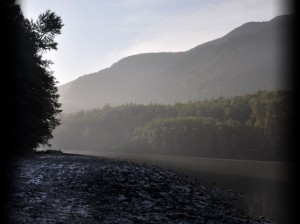 The Skagit River Salmon Festival is a celebration of salmon as a magnificent, sustainable, natural resource right here in our backyard! The Skagit River is the stronghold for salmon and steelhead in Puget Sound, and honestly, our region’s best chance to save salmon from being diminished, and arguably our community at the same time.
The Skagit River Salmon Festival is a celebration of salmon as a magnificent, sustainable, natural resource right here in our backyard! The Skagit River is the stronghold for salmon and steelhead in Puget Sound, and honestly, our region’s best chance to save salmon from being diminished, and arguably our community at the same time.
Usually a short story like this would relay our Skagit salmon story, what they need to survive, how much of that was lost before we knew any better, and what one can do to help. And of course all of that information is available at the Festival each year or local websites.
But this article is about something else. It’s about us, Skagit’s communities, and what we want and need from the ever-changing world around us. It’s about nothing less than our very own prosperity and cultural legacy; and what our children and grandchildren will conclude about us in the future. Continue reading →
Posted on March 5, 2019 by Skagit Watershed Council
Selling a Pristine Jewel
Linda Sanford’s story of promoting stewardship through realty
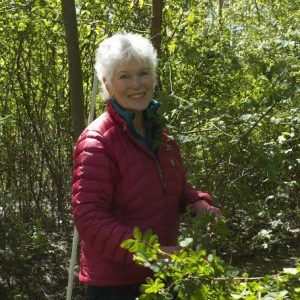 Linda Sanford has been a Realtor in the Skagit Valley for over twenty-years. Passionate about her niche market, healthy homes and intentional living, Linda describes the valley as the emulsion of saltwater, alpine wilderness, wildlife, and community; “The Skagit is just magic… and there really isn’t any other place like it. It really is a pristine jewel.”
Linda Sanford has been a Realtor in the Skagit Valley for over twenty-years. Passionate about her niche market, healthy homes and intentional living, Linda describes the valley as the emulsion of saltwater, alpine wilderness, wildlife, and community; “The Skagit is just magic… and there really isn’t any other place like it. It really is a pristine jewel.”
Linda was working as a Realtor in the Seattle area when she became interested in intentional living. She began her education, focusing on eco-housing, intentional living, net-zero, and green building, earning certificates in the field as she expanded her knowledge and credibility. She moved north to find a community strong in agricultural and adjacent to salt water and found it in the community of Anacortes, WA. Continue reading →
Posted on February 19, 2019 by Skagit Watershed Council
A Fertile Valley
John DeGloria’s Story of Eating Locally
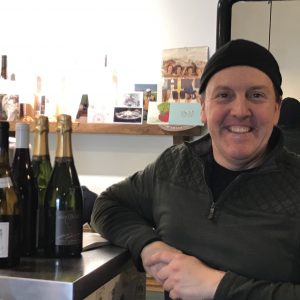 If you love seafood, then you know the Skagit Valley is a special place to enjoy the bounty of the Sea. John DeGloria, owner of Slough Food in Edison, celebrates the seasons through food. Winter is oyster season, summer is for Dungeness crabs, and in the fall, salmon is king. The access to fresh, healthy food harvested locally is something worth celebrating.
If you love seafood, then you know the Skagit Valley is a special place to enjoy the bounty of the Sea. John DeGloria, owner of Slough Food in Edison, celebrates the seasons through food. Winter is oyster season, summer is for Dungeness crabs, and in the fall, salmon is king. The access to fresh, healthy food harvested locally is something worth celebrating.
For John, what makes the Skagit Valley so special is the farmland. The Skagit Valley’s fertile soil is a result of thousands of years of the Skagit and Samish rivers flooding their banks and weaving across the valley while depositing nutrient rich soil along the valley floor. “You don’t really have to seek out good organic food here, it’s pretty easy to come by” John said about the abundance of fresh food from the valley. Today, there are over 200 commercial crops produced within the Skagit Valley, worth nearly $300,000,000 annually. (WSU 2017 Skagit County Agriculture Stats) Continue reading →
Posted on January 7, 2019 by Skagit Watershed Council
A Legacy of Educated Citizens
Mary Janda’s Story of Teaching About Place
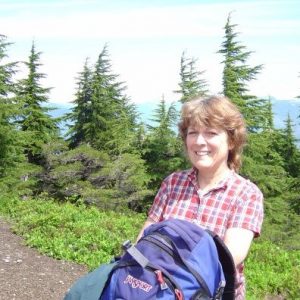 For Mary Janda, the Skagit River is more than a natural resource, it’s a teaching tool. For the past 26 years, Mary has taught in the Concrete School District; utilizing the Valley’s natural resources and the outdoors as a classroom. “I got those kids outside so they never would forget,” she recalls. Continue reading →
For Mary Janda, the Skagit River is more than a natural resource, it’s a teaching tool. For the past 26 years, Mary has taught in the Concrete School District; utilizing the Valley’s natural resources and the outdoors as a classroom. “I got those kids outside so they never would forget,” she recalls. Continue reading →
Posted on December 17, 2018 by Skagit Watershed Council
A Uniquely Skagit Childhood
Deanna Ammon’s Story of living in the Loretta Creek Logging Camp
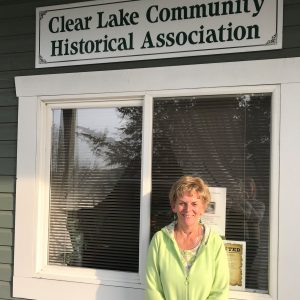
Imagine growing up in a logging camp across the Skagit near Hamilton. Your house was a railroad car, the only way to access modern civilization was to take a ferry ride across the Skagit River. This was normal life for the first three years of Deanna Ramey Ammons, a life-long Skagitonian. Continue reading →
Posted on November 7, 2018 by Skagit Watershed Council
It was Love at First Sight
Anne Schwartz’ Story about seeking a lifestyle connected to the land
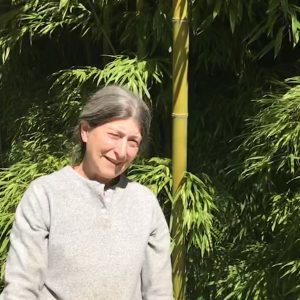 Seeking a lifestyle that was more connected with the land, natural resources, and seasons, Anne Schwartz headed west in 1975. Initially destined for California, Anne stopped in Sedro-Woolley, WA to visit friends from Rutgers who found work in the timber industry after Forestry School. “It was love at first sight,” she describes her immediate connection to Skagit Valley. Anne and her husband, Mike Brondi, both had grown up in New Jersey. Most of their family and classmates were destined for jobs where you do the same thing day in and day out for 50 weeks out of the year and then you have your two weeks of vacation. They knew that lifestyle was not for them. “Coming to the Skagit Valley from New Jersey was literally like falling into paradise in 1975. It was really easy to find work, the people were so welcoming and friendly; people were really nice to each other.” Anne worked seasonal jobs off and on in the Skagit Valley while also studying Animal Science at Washington State University. She worked sorting potatoes, in the bulb fields for Lafeber Farms, and at a veterinarian clinic in Mount Vernon under Dr. Ray Bradberry. Continue reading →
Seeking a lifestyle that was more connected with the land, natural resources, and seasons, Anne Schwartz headed west in 1975. Initially destined for California, Anne stopped in Sedro-Woolley, WA to visit friends from Rutgers who found work in the timber industry after Forestry School. “It was love at first sight,” she describes her immediate connection to Skagit Valley. Anne and her husband, Mike Brondi, both had grown up in New Jersey. Most of their family and classmates were destined for jobs where you do the same thing day in and day out for 50 weeks out of the year and then you have your two weeks of vacation. They knew that lifestyle was not for them. “Coming to the Skagit Valley from New Jersey was literally like falling into paradise in 1975. It was really easy to find work, the people were so welcoming and friendly; people were really nice to each other.” Anne worked seasonal jobs off and on in the Skagit Valley while also studying Animal Science at Washington State University. She worked sorting potatoes, in the bulb fields for Lafeber Farms, and at a veterinarian clinic in Mount Vernon under Dr. Ray Bradberry. Continue reading →
Posted on October 22, 2018 by Skagit Watershed Council
Anita Luvera Mayer’s life-long love of the Skagit Valley
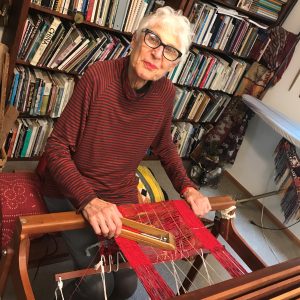
Anita at her Loom
Anita Luvera Mayer, the daughter of Italian and Croatian immigrants, has spent most of her life in Anacortes. Her mother’s family came from Splitska on the island of Brač and her father from Reggio, Italy when he was just 12 by way of Alberta, Canada. Her father, Paul Luvera, owned a grocery store in Anacortes from 1922 until 1957 which also served the fishing industry during each summer. Continue reading →
Posted on October 2, 2018 by Skagit Watershed Council
Saul Weisberg’s Lifelong Journey Down the Skagit
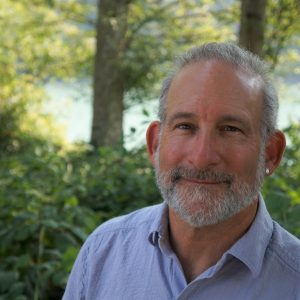 Saul Weisberg remembers when it hit him. In the early 1980s, he and two friends were on a climbing trip in the Pickets, a notoriously hard-to-reach chain of icy peaks high in the North Cascades. After 10 days of sipping snow melt in the high country, he recalls coming down and drinking deeply from mountain streams that eventually flowed into Big Beaver Creek. They crossed over the creek on giant cedar logs, or waded along the edges as they followed it down through lush forest to arrive at Ross Lake and finally, the Skagit River. On the drive home, they pulled over and sat on the river bank. That’s when he knew.
Saul Weisberg remembers when it hit him. In the early 1980s, he and two friends were on a climbing trip in the Pickets, a notoriously hard-to-reach chain of icy peaks high in the North Cascades. After 10 days of sipping snow melt in the high country, he recalls coming down and drinking deeply from mountain streams that eventually flowed into Big Beaver Creek. They crossed over the creek on giant cedar logs, or waded along the edges as they followed it down through lush forest to arrive at Ross Lake and finally, the Skagit River. On the drive home, they pulled over and sat on the river bank. That’s when he knew.
“I had this sense that this place was all connected,” Weisberg recalls. “And I was a part of it. I didn’t really know what that meant, but it felt like, ‘This is home. This is a good place to call home.’” Continue reading →
Posted on September 18, 2018 by Skagit Watershed Council
Mark Hitchcock’s life in the woods
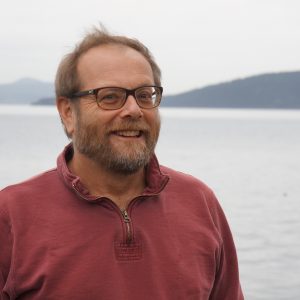 When Mark Hitchcock reflects on Skagit Valley’s unique character, one particular memory comes to mind. He was serving his first term on the board of the Skagit Conservation District when baseball season came around. He and his wife Alison joined a team of folks from the District, the Natural Resource Conservation Service, and the Farm Service Agency. Fittingly, their uniforms bore the white and black pattern of a Holstein cow. They named themselves “the Lagoons,” in an effort to draw attention to an important issue at the time: managing dairy waste in manure lagoons. Unfortunately, this resulted in an unexpected nickname from opposing teams: the L.A. Goons.
When Mark Hitchcock reflects on Skagit Valley’s unique character, one particular memory comes to mind. He was serving his first term on the board of the Skagit Conservation District when baseball season came around. He and his wife Alison joined a team of folks from the District, the Natural Resource Conservation Service, and the Farm Service Agency. Fittingly, their uniforms bore the white and black pattern of a Holstein cow. They named themselves “the Lagoons,” in an effort to draw attention to an important issue at the time: managing dairy waste in manure lagoons. Unfortunately, this resulted in an unexpected nickname from opposing teams: the L.A. Goons.
Despite their winning outfits, the Lagoons managed to lose every single game that season. “In the final game, we played the only other team that had not won a game yet,” Hitchcock recalls with a laugh. “They did manage to beat us.” Even though they had a rough season, Hitchcock remembers it fondly. Reclined in a rocking chair in his home on Samish Island, Hitchcock wears an air of affability with a glint of humor in his eyes above a red beard. “We had a lot of fun playing baseball and staying tight to the work.” Continue reading →
Posted on September 4, 2018 by Skagit Watershed Council
After decades of farming the Skagit, Mike Youngquist values the community and the river that feeds it
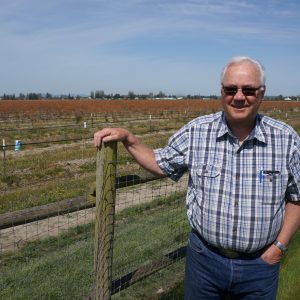 Mike Youngquist’s agricultural roots in Skagit Valley run about as deep as they get. In 1880, his great-grandfather John Jungquist immigrated from Sweden and homesteaded in 1886 a 40-acre parcel on what would become Jungquist Road. Mike was born in 1943 and raised on that same land where his father (Don) and grandfather (Emil) ran a dairy farm. He worked on the farm through high school, studied agriculture in college, worked summers in the Skagit pea fields, and eventually returned to carry on the legacy of working the family land in 1970. Today, he lives in his grandfather’s house, no longer grows crops, but still packs and markets strawberries and raspberries with his wife (Jeanne) as Mike and Jean’s Berry Farm. Continue reading →
Mike Youngquist’s agricultural roots in Skagit Valley run about as deep as they get. In 1880, his great-grandfather John Jungquist immigrated from Sweden and homesteaded in 1886 a 40-acre parcel on what would become Jungquist Road. Mike was born in 1943 and raised on that same land where his father (Don) and grandfather (Emil) ran a dairy farm. He worked on the farm through high school, studied agriculture in college, worked summers in the Skagit pea fields, and eventually returned to carry on the legacy of working the family land in 1970. Today, he lives in his grandfather’s house, no longer grows crops, but still packs and markets strawberries and raspberries with his wife (Jeanne) as Mike and Jean’s Berry Farm. Continue reading →


